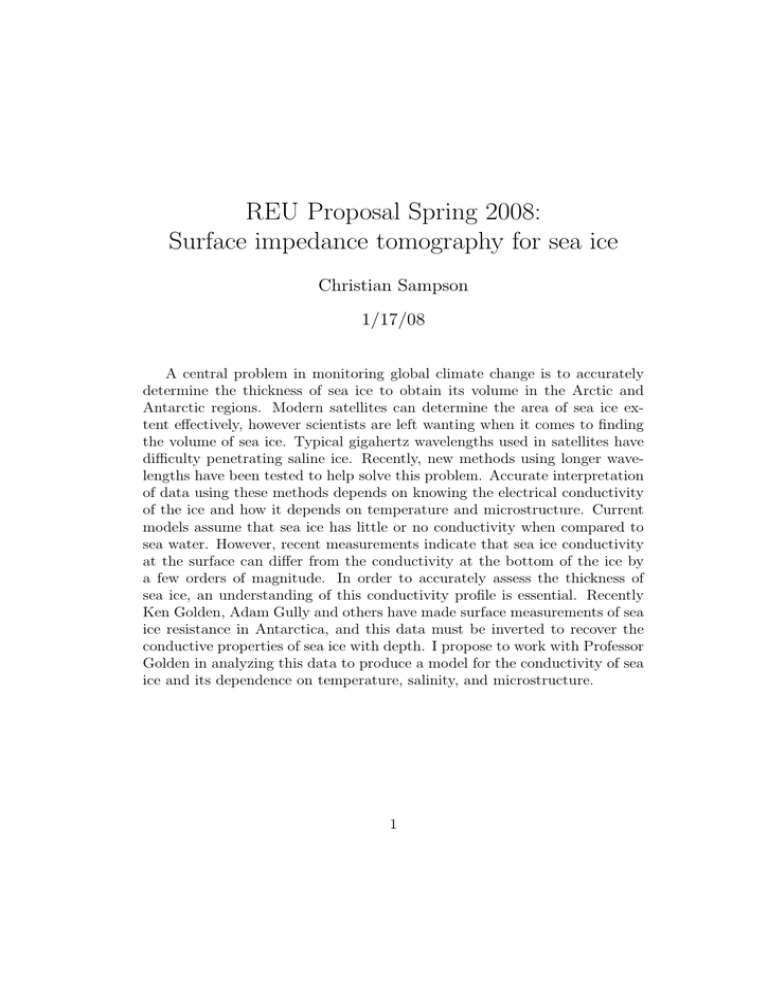REU Proposal Spring 2008: Surface impedance tomography for sea ice Christian Sampson 1/17/08
advertisement

REU Proposal Spring 2008: Surface impedance tomography for sea ice Christian Sampson 1/17/08 A central problem in monitoring global climate change is to accurately determine the thickness of sea ice to obtain its volume in the Arctic and Antarctic regions. Modern satellites can determine the area of sea ice extent effectively, however scientists are left wanting when it comes to finding the volume of sea ice. Typical gigahertz wavelengths used in satellites have difficulty penetrating saline ice. Recently, new methods using longer wavelengths have been tested to help solve this problem. Accurate interpretation of data using these methods depends on knowing the electrical conductivity of the ice and how it depends on temperature and microstructure. Current models assume that sea ice has little or no conductivity when compared to sea water. However, recent measurements indicate that sea ice conductivity at the surface can differ from the conductivity at the bottom of the ice by a few orders of magnitude. In order to accurately assess the thickness of sea ice, an understanding of this conductivity profile is essential. Recently Ken Golden, Adam Gully and others have made surface measurements of sea ice resistance in Antarctica, and this data must be inverted to recover the conductive properties of sea ice with depth. I propose to work with Professor Golden in analyzing this data to produce a model for the conductivity of sea ice and its dependence on temperature, salinity, and microstructure. 1




